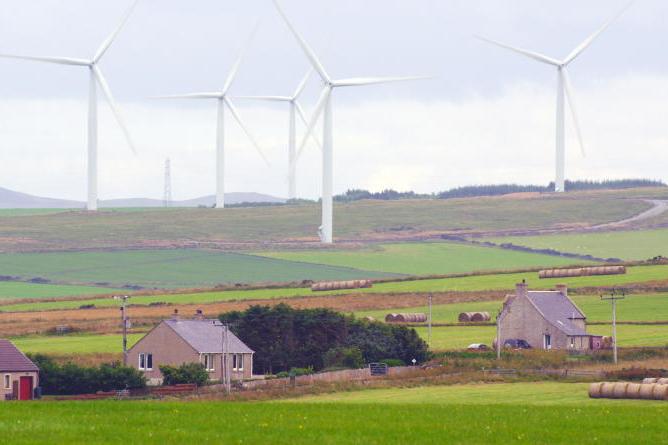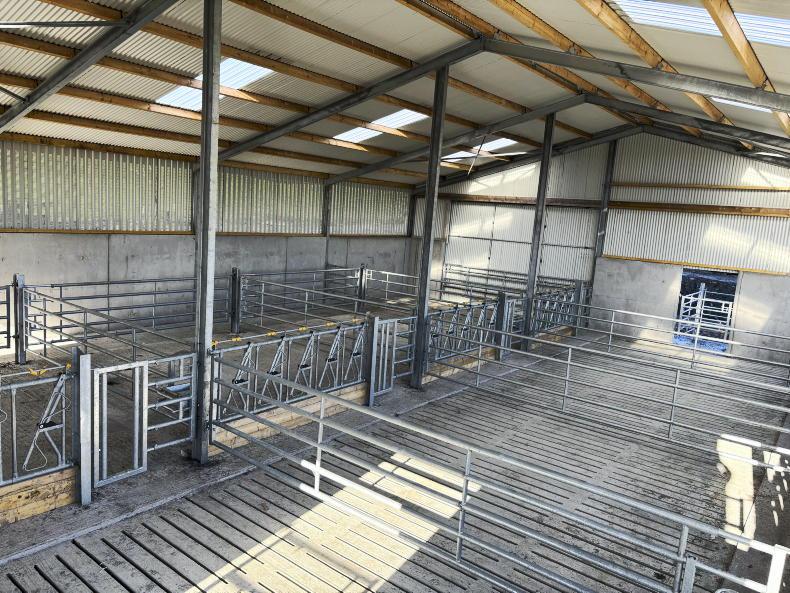There are set to be big changes in how and where renewable electricity projects are built, with county-by-county allocations on the way.
The move is one of a number of sweeping changes to the planning system, aimed at making it easier to build out new wind and solar farms, battery storage and grid infrastructure.
During the planning session at the recent Wind Energy Ireland annual conference, delegates were told that the country’s previous target of 40% renewable electricity was essentially met by targeting the low-hanging fruit, ie, more isolated and remote areas.
Niall Cussen, chief executive at the Office of the Planning Regulator (OPR), explained that to reach 80% renewable electricity by 2030, renewable projects will likely be built closer to populated areas, with communities which have a mixed range of views on these projects. He explained that changes will be coming to the entire planning framework, to align it with our Climate Action Plan targets.

Paul O'Neill of the Planning Advisory Division at the Department of the Environment, Climate and Communications
This includes changes to local development plans, which are developed by local county councils. He said that current local authority development plans do not designate significant areas where policy would favour wind, solar and other associated developments.
Urgent reform is required and needed now to align these plans with national targets and objectives, he explained.
County targets
Paul O’Neill of the Planning Advisory Division at the Department of the Environment, Climate and Communications explained to the conference how Ireland’s new planning landscape will look, which represents a significant change from the regime so far.
Firstly, you have the new Planning and Development Act 2024, which Paul said will be the main engine for change. The next step is the revised National Planning Framework (NPF), which will feed into new regional renewable energy strategies.
Each regional assembly will have a regional renewable electricity target. Guidelines on these will be published shortly.
Paul explained that this is a significant change as, from here, county-level renewable energy targets will be set.
This in turn will feed into local authority renewable energy strategies and county development plans. He explained that the measure will ensure that county development plans are consistent with the country’s Climate Action Plan and the climate goals.
The county targets will need to be realistic and achievable, the conference heard, and central to this will be grid access.

Niall Cussen, Planning Regulator with the Office of the Planning Regulator
The draft NPF shows that, by 2030, the eastern and midland counties will house the largest share of solar farms, while the southern region will have the largest share of onshore wind. Just 12% of the country’s solar will be located in the northern and western region and, despite its abundant wind resources, will only see 35% of onshore wind projects.
Anti-renewables development plans
Niall said the OPR’s job is to act as the State’s enforcer of high-level Government policy on planning.
It reviews development plans, and if they are not in line with climate and planning law, they have the power to recommend to the minister to direct the council to change their plans. In his address, Niall questioned how anyone could countenance having a legally binding commitment in one hand to go from 40% to 80% renewable electricity and simply wave away county development plans that actually include policies and measures to frustrate the achievement of that objective.
For example, many county development plans have mapped areas in which new wind farms are not permitted.
This was the basis for the landmark High Court challenge by Coolglass Windfarm, in which it successfully quashed An Bord Pleanála’s decision to refuse their 13-turbine wind farm in Laois.
He said that this must also take into account the many wind farms that are progressing through the planning system but are in areas where current plans do not favour wind farm development.
Last year, CEO of Wind Energy Ireland, Noel Cunniffe, said that the group was seeing an increase in the number of project refusals because of anti-wind County Development Plans, where local authorities have changed the zoning of land to prevent wind farms from being built.
Other changes
The Planning and Development Act 2024, while criticised by some for not going far enough, will lead to a step change in planning for renewable energy and infrastructure. However, there is other considerable work ongoing within the Government.
Paul also spoke about the work being undertaken by the Accelerating Renewable Electricity Taskforce.
The taskforce was set up to identify, coordinate and prioritise the policies required to fast-track and increase the deployment of onshore renewable electricity generation and supporting technologies. It focuses mainly on grid development, planning, and the route to market.
This is being driven by our Climate Action Plan, which, as we know, sets significant targets that Ireland must meet.
The long-awaited draft Wind Energy Development Guidelines/National Planning Statement are expected soon. Paul explained that there were too many changing policies, which meant it couldn’t be updated until many of these had been settled.
Some of the changes expected in the guidelines include a greater emphasis on resolving issues at the pre-application stages, and developers will need to come more prepared, he said.
The new Renewable Energy Directive (RED) III is being transposed into Irish law and it is hoped to be completed soon.
As part of RED III, Ireland has to identify potential and available land necessary for renewable development and identify any gaps.
Paul said that the map has been developed and it must be reported by May of this year.
This work ties in with the long-awaited land use review.
In short
There are set to be big changes in how and where renewable electricity projects are built, with county-by-county allocations on the way.
The move is one of a number of sweeping changes to the planning system, aimed at making it easier to build out new wind and solar farms, battery storage and grid infrastructure.
During the planning session at the recent Wind Energy Ireland annual conference, delegates were told that the country’s previous target of 40% renewable electricity was essentially met by targeting the low-hanging fruit, ie, more isolated and remote areas.
Niall Cussen, chief executive at the Office of the Planning Regulator (OPR), explained that to reach 80% renewable electricity by 2030, renewable projects will likely be built closer to populated areas, with communities which have a mixed range of views on these projects. He explained that changes will be coming to the entire planning framework, to align it with our Climate Action Plan targets.

Paul O'Neill of the Planning Advisory Division at the Department of the Environment, Climate and Communications
This includes changes to local development plans, which are developed by local county councils. He said that current local authority development plans do not designate significant areas where policy would favour wind, solar and other associated developments.
Urgent reform is required and needed now to align these plans with national targets and objectives, he explained.
County targets
Paul O’Neill of the Planning Advisory Division at the Department of the Environment, Climate and Communications explained to the conference how Ireland’s new planning landscape will look, which represents a significant change from the regime so far.
Firstly, you have the new Planning and Development Act 2024, which Paul said will be the main engine for change. The next step is the revised National Planning Framework (NPF), which will feed into new regional renewable energy strategies.
Each regional assembly will have a regional renewable electricity target. Guidelines on these will be published shortly.
Paul explained that this is a significant change as, from here, county-level renewable energy targets will be set.
This in turn will feed into local authority renewable energy strategies and county development plans. He explained that the measure will ensure that county development plans are consistent with the country’s Climate Action Plan and the climate goals.
The county targets will need to be realistic and achievable, the conference heard, and central to this will be grid access.

Niall Cussen, Planning Regulator with the Office of the Planning Regulator
The draft NPF shows that, by 2030, the eastern and midland counties will house the largest share of solar farms, while the southern region will have the largest share of onshore wind. Just 12% of the country’s solar will be located in the northern and western region and, despite its abundant wind resources, will only see 35% of onshore wind projects.
Anti-renewables development plans
Niall said the OPR’s job is to act as the State’s enforcer of high-level Government policy on planning.
It reviews development plans, and if they are not in line with climate and planning law, they have the power to recommend to the minister to direct the council to change their plans. In his address, Niall questioned how anyone could countenance having a legally binding commitment in one hand to go from 40% to 80% renewable electricity and simply wave away county development plans that actually include policies and measures to frustrate the achievement of that objective.
For example, many county development plans have mapped areas in which new wind farms are not permitted.
This was the basis for the landmark High Court challenge by Coolglass Windfarm, in which it successfully quashed An Bord Pleanála’s decision to refuse their 13-turbine wind farm in Laois.
He said that this must also take into account the many wind farms that are progressing through the planning system but are in areas where current plans do not favour wind farm development.
Last year, CEO of Wind Energy Ireland, Noel Cunniffe, said that the group was seeing an increase in the number of project refusals because of anti-wind County Development Plans, where local authorities have changed the zoning of land to prevent wind farms from being built.
Other changes
The Planning and Development Act 2024, while criticised by some for not going far enough, will lead to a step change in planning for renewable energy and infrastructure. However, there is other considerable work ongoing within the Government.
Paul also spoke about the work being undertaken by the Accelerating Renewable Electricity Taskforce.
The taskforce was set up to identify, coordinate and prioritise the policies required to fast-track and increase the deployment of onshore renewable electricity generation and supporting technologies. It focuses mainly on grid development, planning, and the route to market.
This is being driven by our Climate Action Plan, which, as we know, sets significant targets that Ireland must meet.
The long-awaited draft Wind Energy Development Guidelines/National Planning Statement are expected soon. Paul explained that there were too many changing policies, which meant it couldn’t be updated until many of these had been settled.
Some of the changes expected in the guidelines include a greater emphasis on resolving issues at the pre-application stages, and developers will need to come more prepared, he said.
The new Renewable Energy Directive (RED) III is being transposed into Irish law and it is hoped to be completed soon.
As part of RED III, Ireland has to identify potential and available land necessary for renewable development and identify any gaps.
Paul said that the map has been developed and it must be reported by May of this year.
This work ties in with the long-awaited land use review.
In short











SHARING OPTIONS